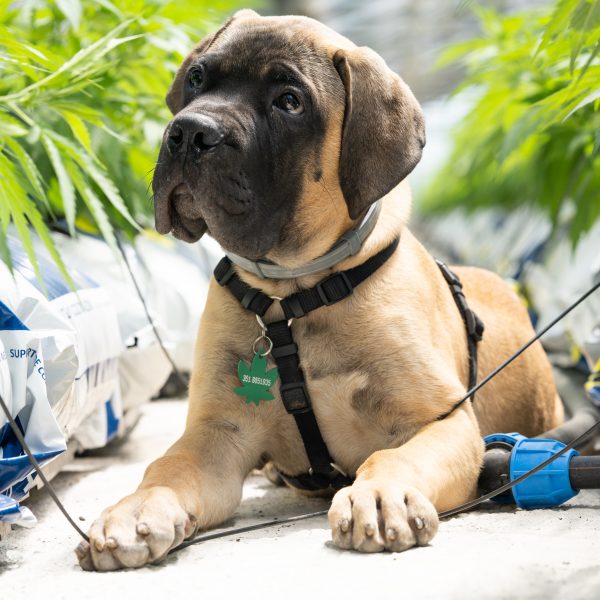Garden and Indoor Plants
Many commonly used outdoor landscaping plants and indoor decorative plants can be toxic to pets if consumed. It’s best to exercise caution and not let your pet consume any plants. Since pets are known for checking out anything that you bring in and having a nibble, keeping your pet away from these flowers is important to minimize symptoms such as indigestion, vomiting, and more:
- Chamomile
- Carnation
- Desert Azalea
- Easter rose
- Foxglove
- Lavender
- Lilies of many different varieties
These are just some of many, many common plants that are dangerous for your dog or cat to nibble on or eat. If you do have these around, put them high up where your pet can’t reach them.
Examples of Safe Plants to Have Around Pets
If you’re feeling disheartened, don’t be! While the list above can feel expansive, there are still plenty of options out there that will help you to decorate and liven up your home in a way that doesn’t put your pet at risk! Some of the best options to have around pets include:
- Haworthia
- African violets
- Gloxinia
- Orchid
- Kitchen herbs
From ferns to flowers to kitchen spices, there are lots of options to help you add some life to your space and keep your pet safe!
How Do I Make Unsafe Plants Safe?
Let’s say someone unknowingly gave you a potted lily or a carnation as a gift. How do you keep your pet safe without throwing out the plant? Firstly, you’ll want to move it out of reach of your pet immediately. Put it on top of a shelf (even if you need to stand on a chair to get there) and redirect your pet’s attention when they go to pick at it.
Next, you’ll want to take a look at your storage options. If you are dealing with a small plant, consider a small terrarium or even a medium-sized one for those plants that can fit in them.
When it comes to cut flowers or large, tall ones that just won’t practically fit in a terrarium, you’ll want to try picking spots that you know pets don’t go. On top of high shelves, in rooms where the pets don’t like to spend time, and so on.
The bottom line is that you can’t make unsafe plants safe, but you can make sure that your pet doesn’t get access to them! This will help keep the risk to a minimum and help you enjoy this heartfelt gift from someone who didn’t know better.
Other Tips For Picking Pet-friendly Plants
If you want to know that you’re always keeping your pets safe from potential risk and harm, you’ll want to focus on the proper information to guide you when looking around at the plant store, greenhouse, or anywhere else that you often get your plants.
Before you go, take some time to look at an exhaustive list of plants and flowers that are dangerous or not recommended for pets. You can even bring that list with you printed or on your phone or something similar if you are worried that you’ll forget. This is a great idea for those who aren’t familiar with so many types of plants, or for those plants that have multiple names!
These days, a lot of stores will actually have a section labeled “pet-safe plants” since many are conscious of pet parents and their needs. If this is the case, you’ll find comfort in that section. The labels on some plants may even say if they are or are not pet-safe!
Finally, you can ask your vet, if you are looking for some advice to help you know what is going to be the best choice for your pet’s health while still enjoying plants and flowers in your home. You can ask your vet for recommendations and also get some information on possible problem symptoms to watch for if you’re feeling apprehensive about that.
Dogs vs. Cats
One last thing to think about is that often dogs aren’t as persistent as cats are when it comes to checking out a new plant. While you still will want to divert your dog away from a dangerous plant and keep it out of reach, dogs tend to give up rather easily and play with a toy instead.
Cats may be more wily and extremely persistent in their interest, and may come back to it when they think you are not watching! If your cat is trying to pick at a plant or flower that they shouldn’t be, they won’t be as easy to redirect. You’ll need to actively keep the plant or flower away from them!
Keep Your Pet Safe!
Your pets and plants are not always best friends, and it can be challenging to keep one away from the other. Understanding what is safe and what isn’t is a huge helping hand to help you prioritize safety as much as possible and also supports you to make safer decisions on how you allow your pet to interact with plants and flowers when staying with friends or family, or even wandering around a park!
Research used from source:
https://www.albertaanimalhealthsource.ca/content/holiday-hazards
Additional research:
https://www.aspca.org/pet-care/animal-poison-control/dogs-plant-list
https://www.architecturaldigest.com/story/pet-friendly-houseplants
